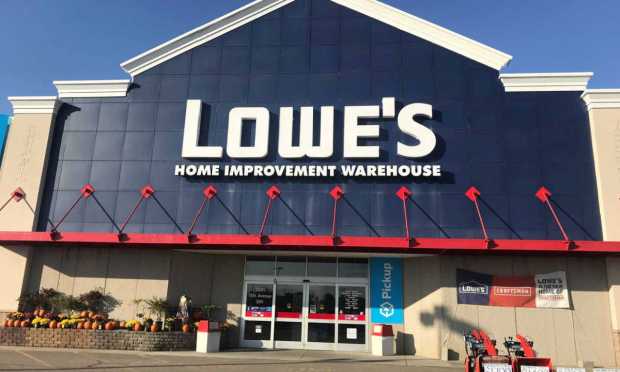Lowe’s Looks To Personal Income, Aging Homes to Extend Home Improvement Trend

The nesting trend continues but at a clipped pace for home improvement retailer Lowe’s as DIY projects popular for the past two-plus years are nudged out as consumers with reduced buying power shift spending priorities to essentials and away from lifestyle.
Reporting its second-quarter 2022 results on Wednesday (Aug. 17), Lowe’s said total second quarter sales were $27.5 billion compared to $27.6 billion in Q2 2021 — a comparable store sales decrease of 0.3% — while the home improvement category ticked up 0.2%
Citing “the shortened spring and lower demand in certain discretionary categories, which was partially offset by a 13% increase in Pro customer sales” the company said its 75% DIY customer mix exposed the chain to more fluctuations in spend changes versus the past two years, particularly in outdoor patio products like grills and furniture, as well as lawn and garden.
Addressing the impact of July housing starts data, CEO Marvin Ellison told analysts that issues facing homebuilders “are not necessarily the same market dynamics that pressure the home improvement retailer,” saying “the three highest correlating factors of home Improvement demand are home price appreciation, the age of the housing stock and disposable personal income.” He added, “While housing turnover is important, it does not index at the same rate as home price appreciation, housing age, and disposable personal income.”
See also: Lowe’s Unveils DIY-U by Lowe’s Digital How-to Project Workshop Portal
He noted that as housing turnover slows, “home prices and home equity remains at record highs, which gives customers confidence that they will get a return on the investment that they make in their homes.” He noted that “one half of the homes in the U.S. are over 40 years old and millions more built at the peak of the housing boom in the early 2000s are now starting to turn 20 years old, which is a key inflection point for big ticket repairs.”
Ellison said sales on Lowes.com grew 7% in Q2 “representing a sales penetration of nearly 10%,” and that “we’re continuing to invest in omnichannel capabilities because we believe there’s still tremendous runway for further growth ahead.”
Executive Vice President-Merchandising Bill Boltz added to that, saying, “We continue to invest in the online user experience by expanding and enhancing our assortments, building out and improving our visualizer and configurator tools and enhancing the delivery experience to make it easier for our customers to track the orders.”
Pros vs DIY
Contrasting what was largely positioned as seasonal effects on DIY sales, the pro side is more robust. “The strength of the pro backlog speaks to the significant pent-up demand for their services,” Ellison said, “and despite the macro uncertainty and unprecedented seasonal demand the past two years, our long-term outlook for the home improvement industry and a pro customer remains positive.”
Management made several mentions of Lowe’s MVP Loyalty program for pros launched earlier this year as delivering a strong performance, while analysts kept returning to softness in Lowe’s heavy DIY customer mix.
Lowe’s Q2 story is contrasted by competitor The Home Depot, whose focus on professional builders and contractors with a backlog of contracted work insulated the retailer from the change in DIY consumer mindset around spending on home improvement projects now.
See also: Home Depot’s Record Q2 Shows Nesting Trend Not Done Yet
For all PYMNTS retail coverage, subscribe to the daily Retail Newsletter.
